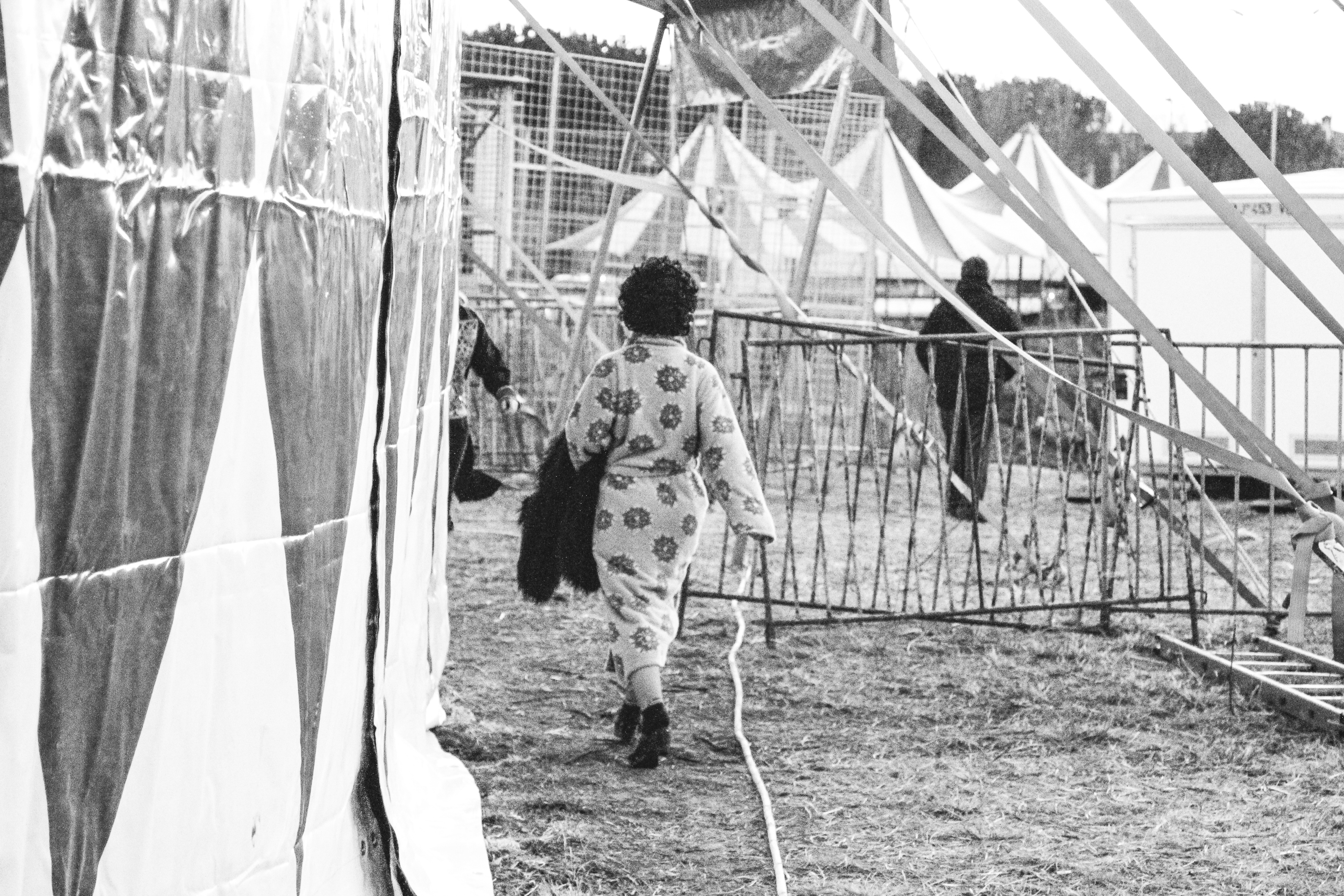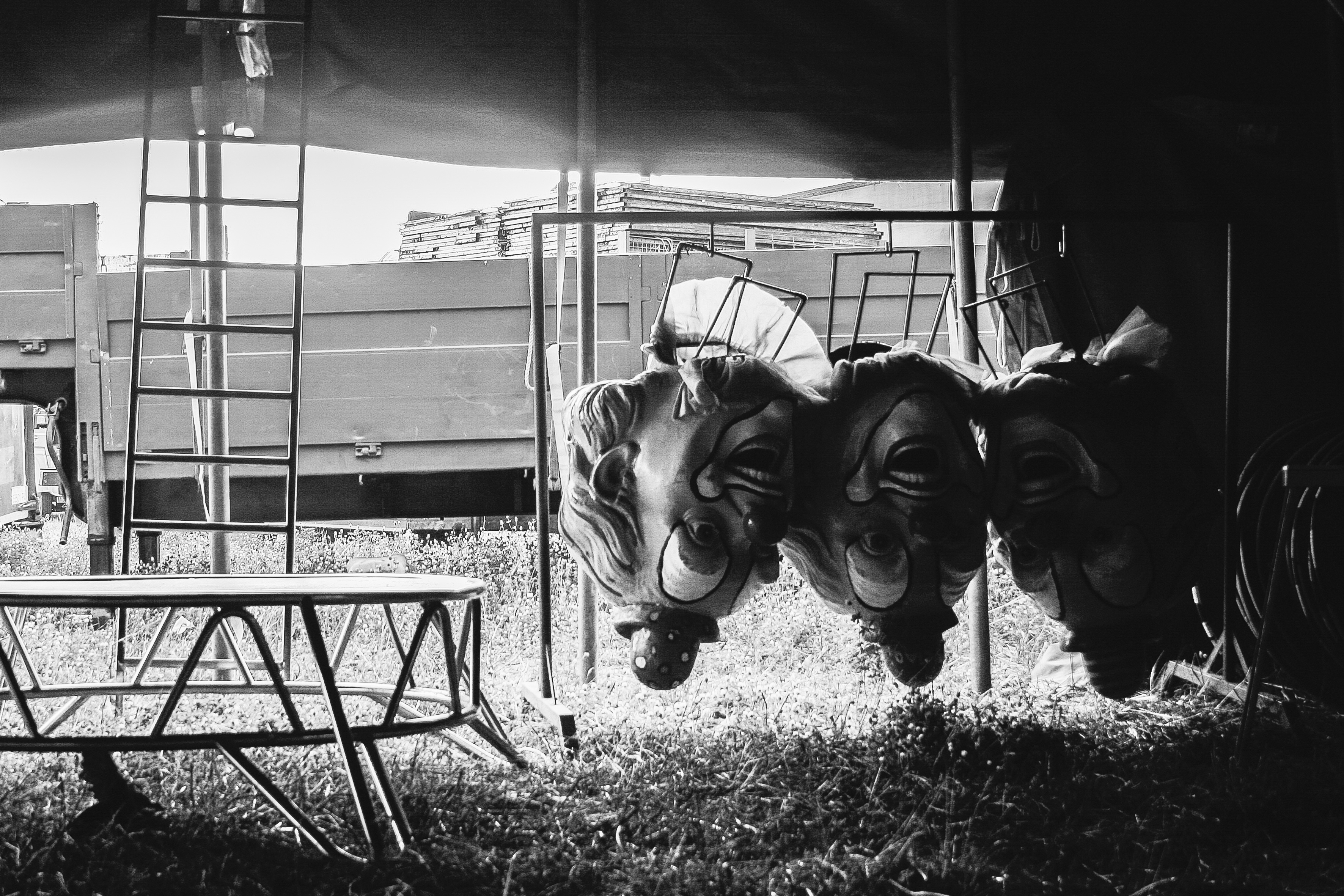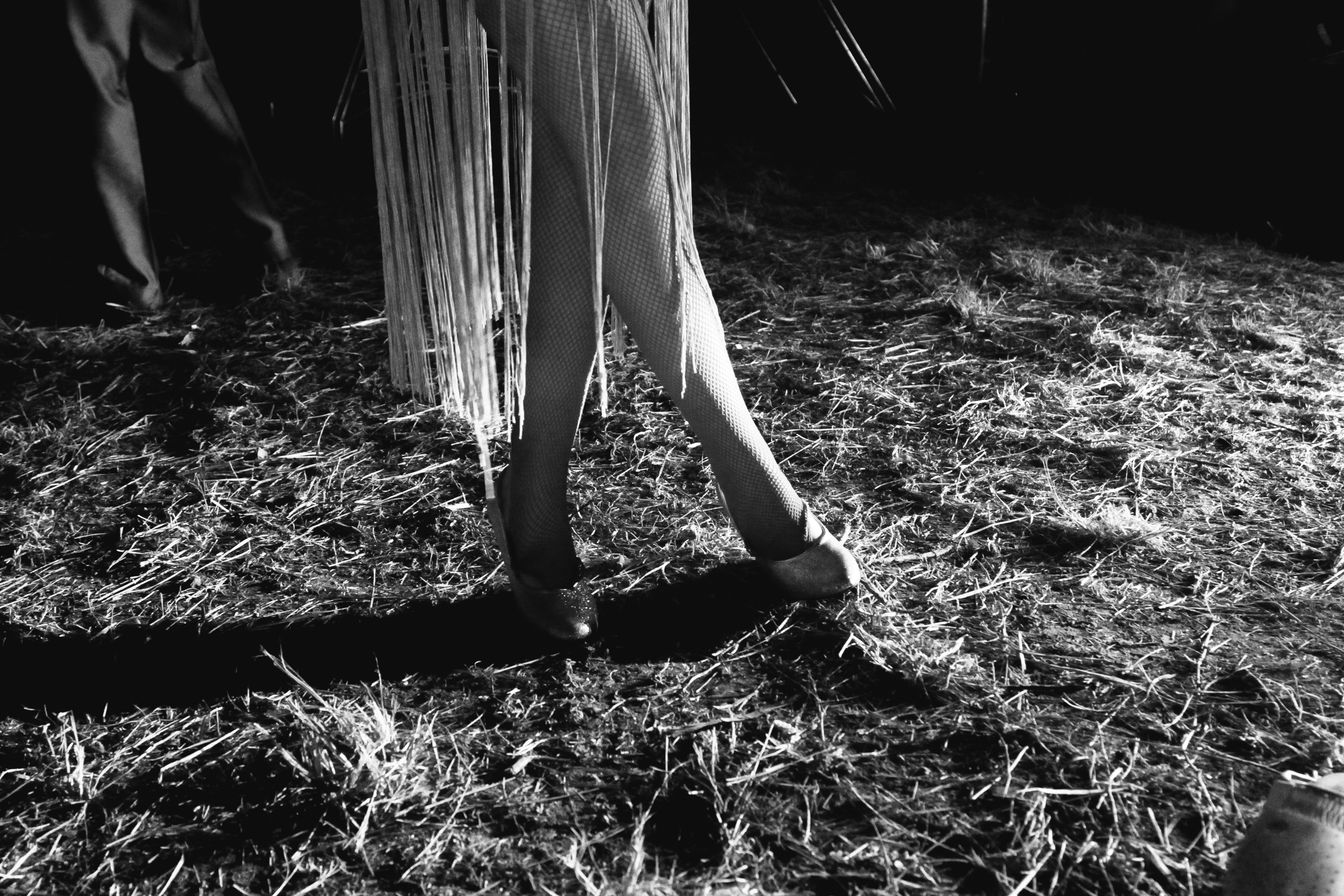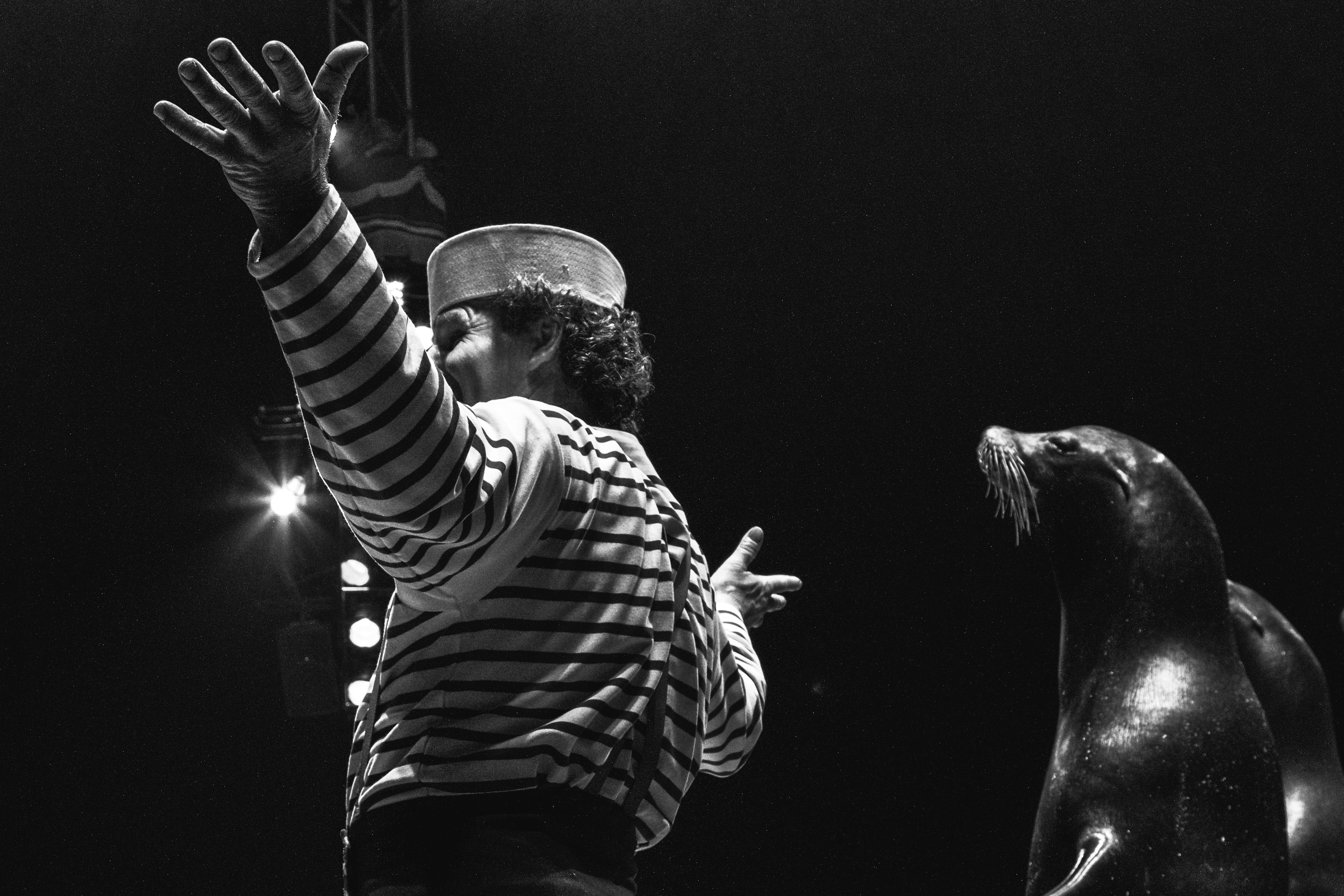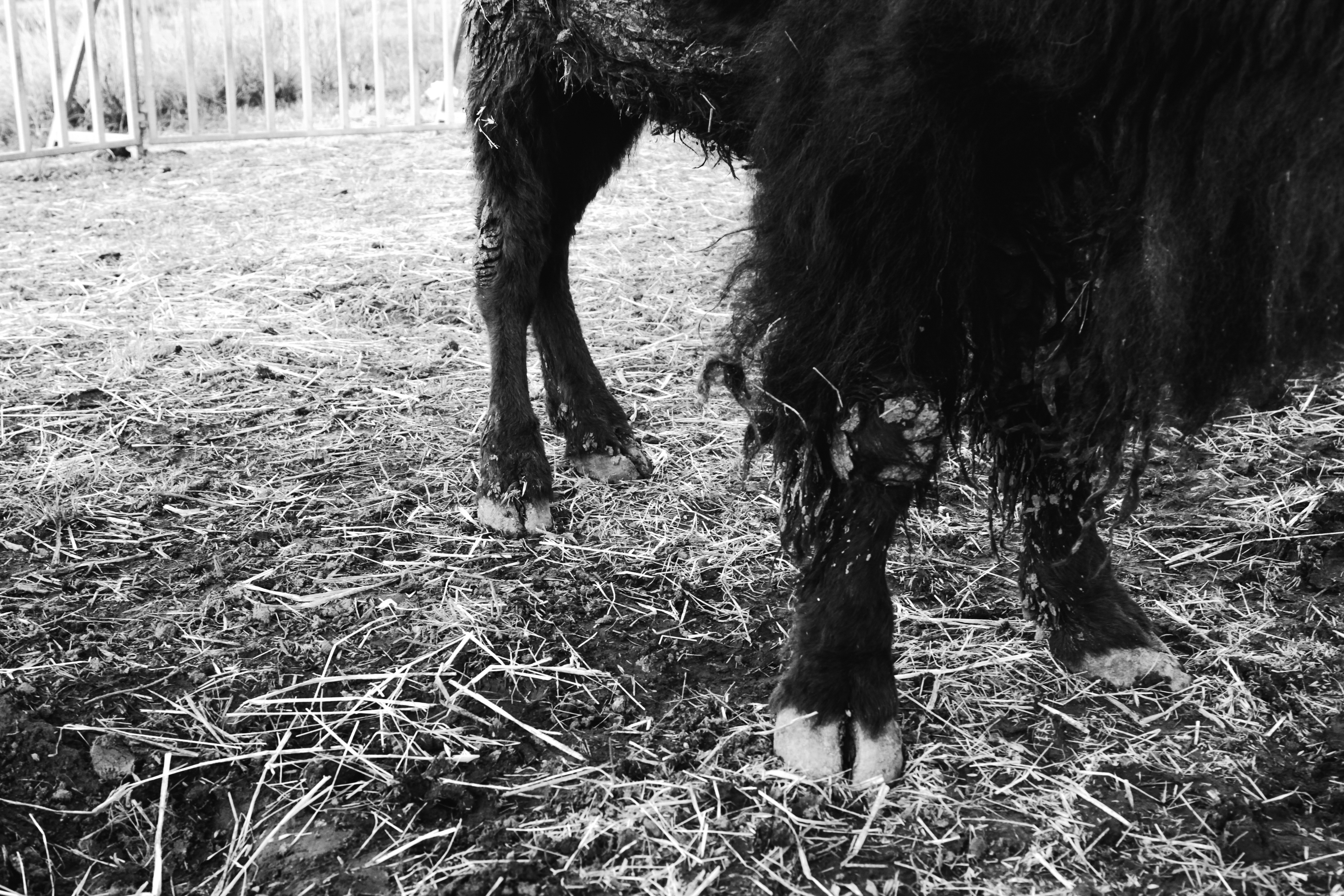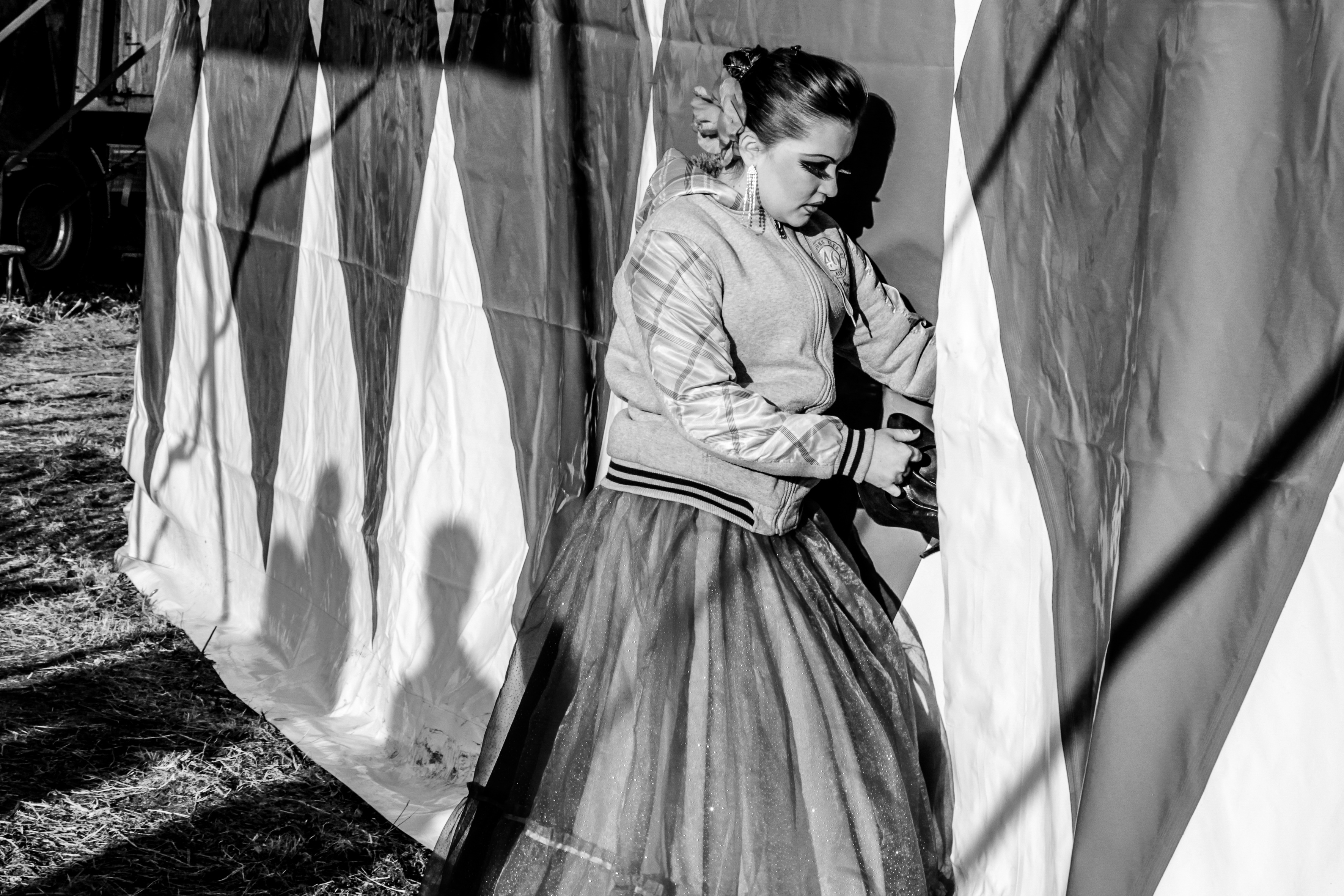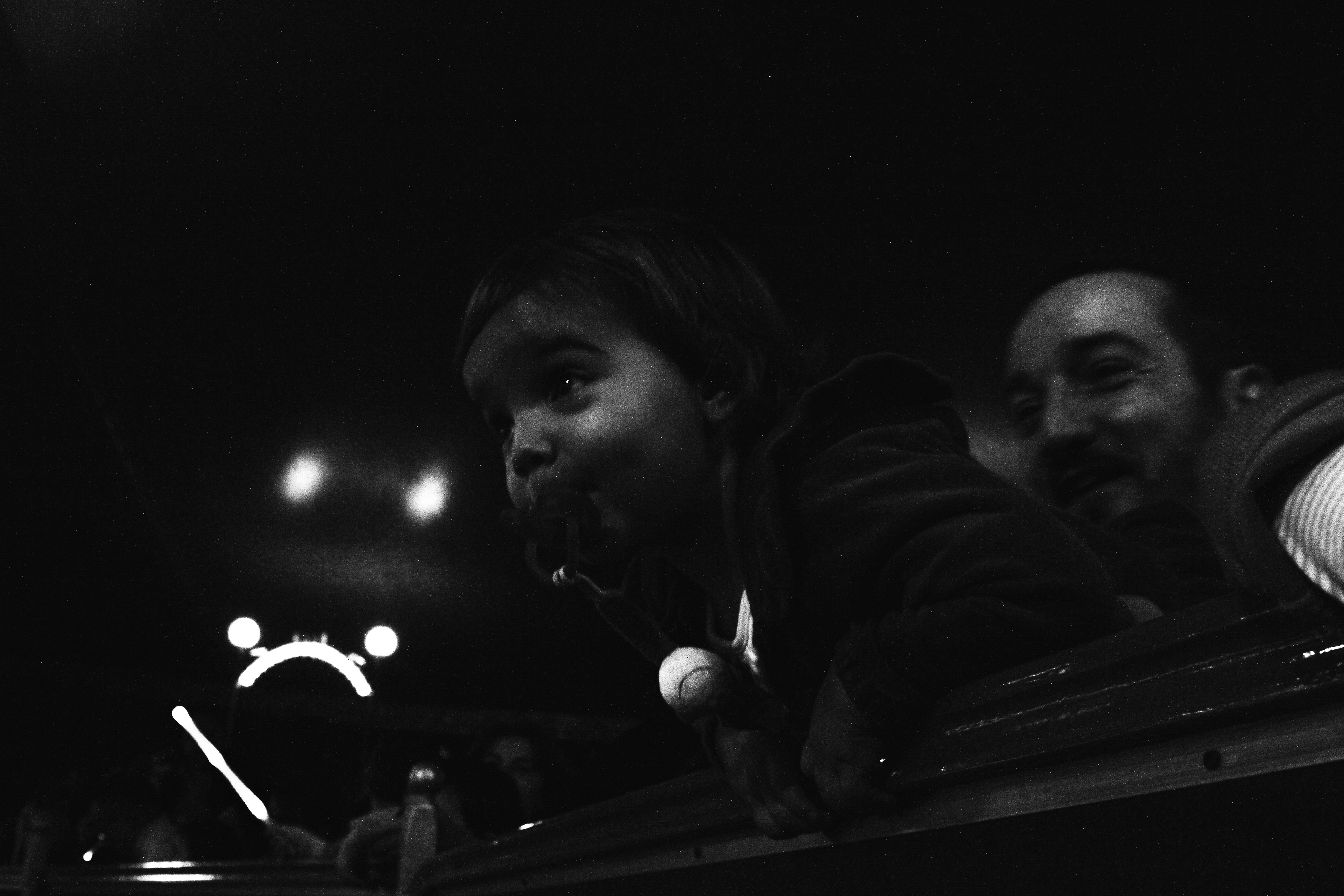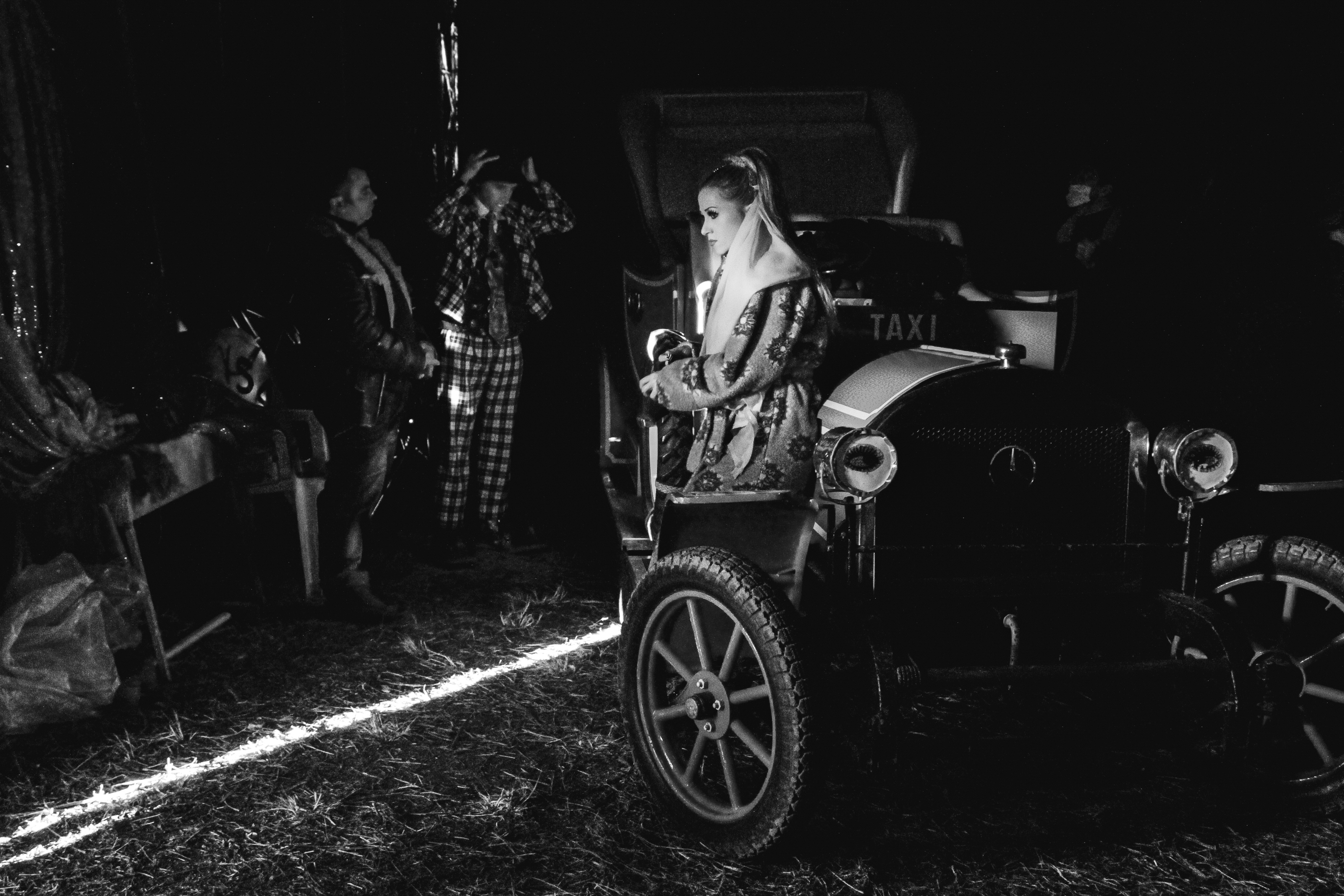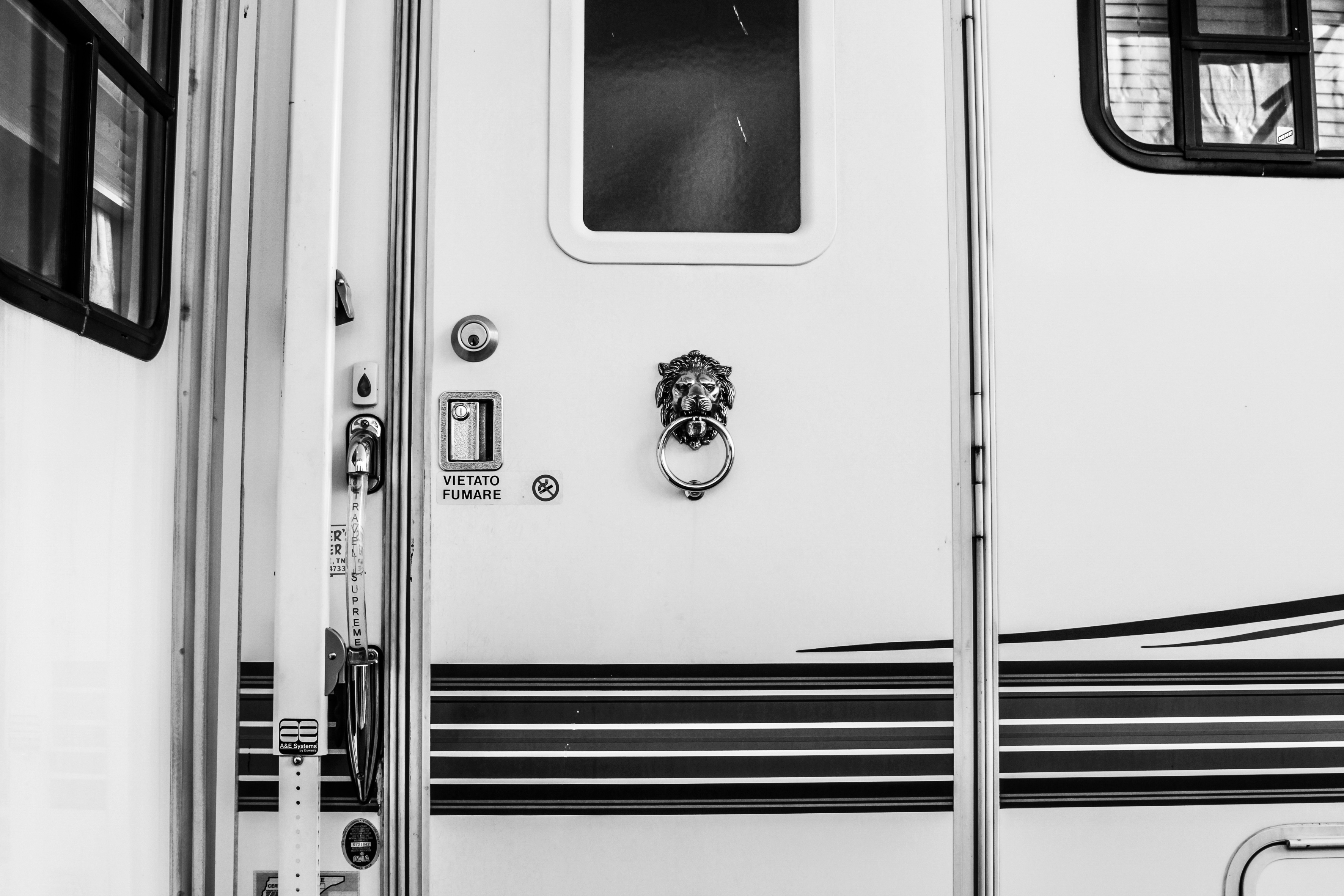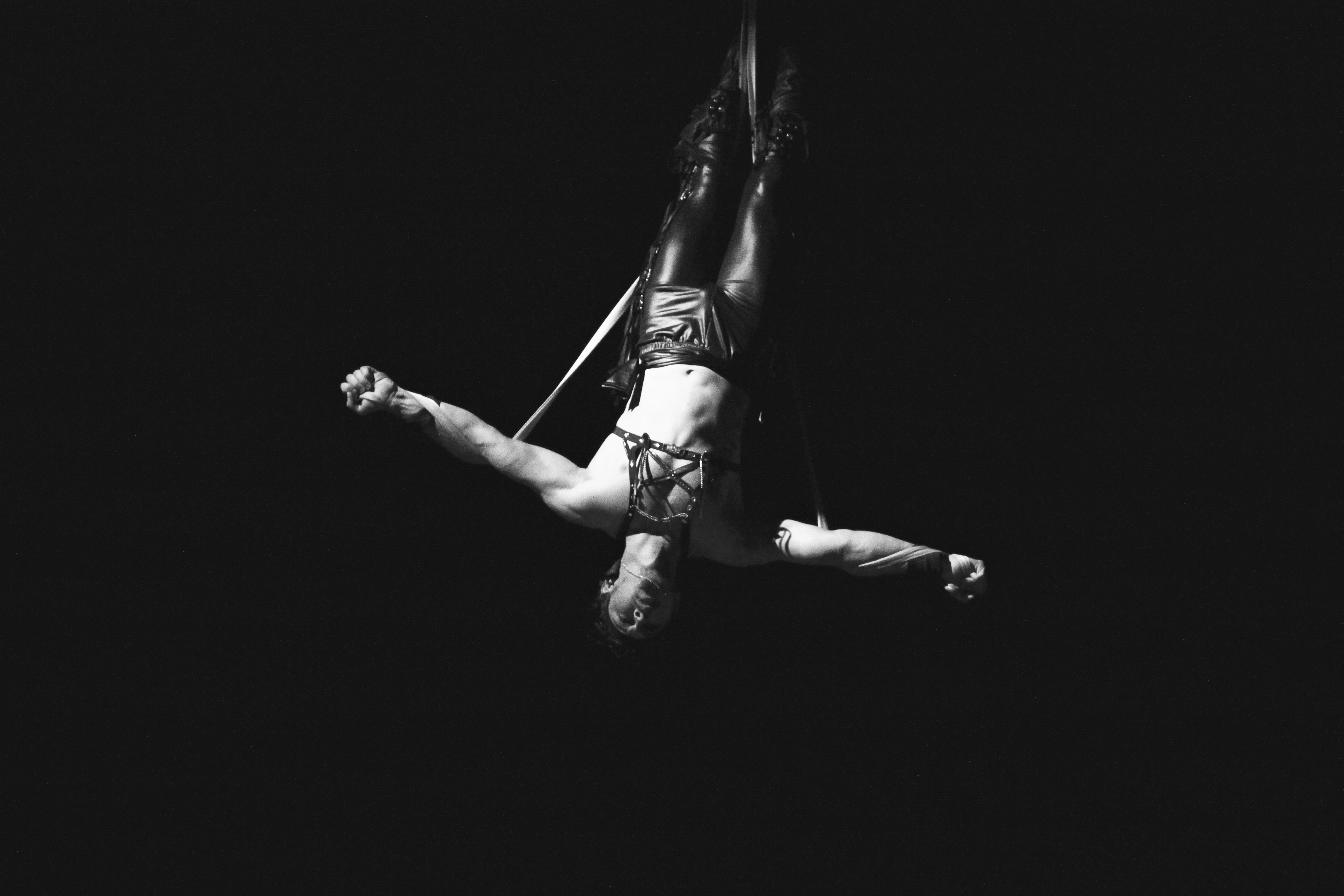Circo di Spagna / Circo Medrano / Circo Roni Roller / Circo Togni (dal 2008 al 2019) © Viola Damiani
Fotografare il circo è stato negli anni un esercizio per provare a osservare lo stupore, mischiare allegria e tristezza senza saperle distinguere, fermare il tempo e rispondere a una forma di attrazione irresistibile, come quella che ha il ferro per la calamìta. Il circo è un racconto simbolico dove la vita si manifesta magica e metafisica, in cui la famiglia è tutto e tutto è famiglia: dal chiodo che ferma il tendone nel fango fino alla punta della struttura verso il cielo, dall’elefante al clown, dalle case-camper ai recinti degli animali… tutti sono importanti allo stesso modo: ogni singolo elemento dipinge un mondo che ha regole tutte sue. Il circo è una città impossibile che oggi c’è e domani potrebbe non esserci più, lasciando il ragionevole dubbio di non essere mai esistito. Da qualche anno è in atto una trasformazione radicale: pian piano gli animali esotici lasceranno il posto a spettacoli basati su capacità umane. Questi sono gli ultimi animali che vedremo lavorare nei circhi italiani.
La legge italiana n. 96 del 2017 vieta l’utilizzo di animali selvatici nei circhi itineranti, ma esistono alcune eccezioni. Alcuni circhi potrebbero ancora avere animali selvatici a causa di alcune disposizioni transitorie previste dalla legge.
La legge prevede che i circhi che possedevano animali selvatici prima dell’entrata in vigore della legge possano continuare a utilizzarli fino alla loro morte naturale o fino a quando non raggiungano un’età in cui non possono più essere utilizzati per le esibizioni. Questa disposizione è stata introdotta per garantire che gli animali siano trattati in modo appropriato durante la transizione verso una pratica circense senza animali selvatici. Inoltre, la legge consente anche l’utilizzo di animali selvatici in circhi fissi, che sono circhi permanenti che non si spostano da un luogo all’altro. Questi circhi devono comunque ottenere un’autorizzazione specifica dalle autorità competenti e devono rispettare rigorosi standard di benessere animale. È importante sottolineare che la legge italiana rappresenta un progresso significativo nella protezione degli animali nei circhi, ma ci potrebbero ancora essere alcune situazioni in cui gli animali selvatici sono presenti. Tuttavia, l’obiettivo a lungo termine è quello di eliminare completamente l’utilizzo di animali selvatici nei circhi e promuovere alternative più etiche e rispettose nei confronti degli animali.
Italian Circus, the last animals.
Photographing the circus has been an exercise over the years to try to observe wonder, mix joy and sadness without being able to distinguish them, stop time and respond to an irresistible form of attraction, like the one that iron has for a magnet. The circus is a symbolic tale where life manifests itself as magical and metaphysical, where family is everything and everything is family: from the nail that holds the tent in the mud to the tip of the structure towards the sky, from the elephant to the clown, from the camper houses to the animal enclosures… everyone is equally important: each individual element paints a world that has its own rules. The circus is an impossible city that is here today and may not be here tomorrow, leaving the reasonable doubt of never having existed. These are the last wild animals working in the italian circus.
The Italian law n. 96 of 2017 prohibits the use of wild animals in traveling circuses, but there are some exceptions. Some circuses may still have wild animals due to transitional provisions provided by the law.
The law provides that circuses that owned wild animals before the law came into force may continue to use them until their natural death or until they reach an age at which they can no longer be used for performances. This provision was introduced to ensure that animals are treated appropriately during the transition to a circus practice without wild animals. Additionally, the law also allows the use of wild animals in fixed circuses, which are permanent circuses that do not move from one place to another. These circuses must obtain specific authorization from the competent authorities and must adhere to rigorous animal welfare standards. It is important to emphasize that the Italian law represents a significant step forward in protecting animals in circuses, but there may still be some situations where wild animals are present. However, the long-term goal is to completely eliminate the use of wild animals in circuses and promote more ethical and respectful alternatives for animals.






